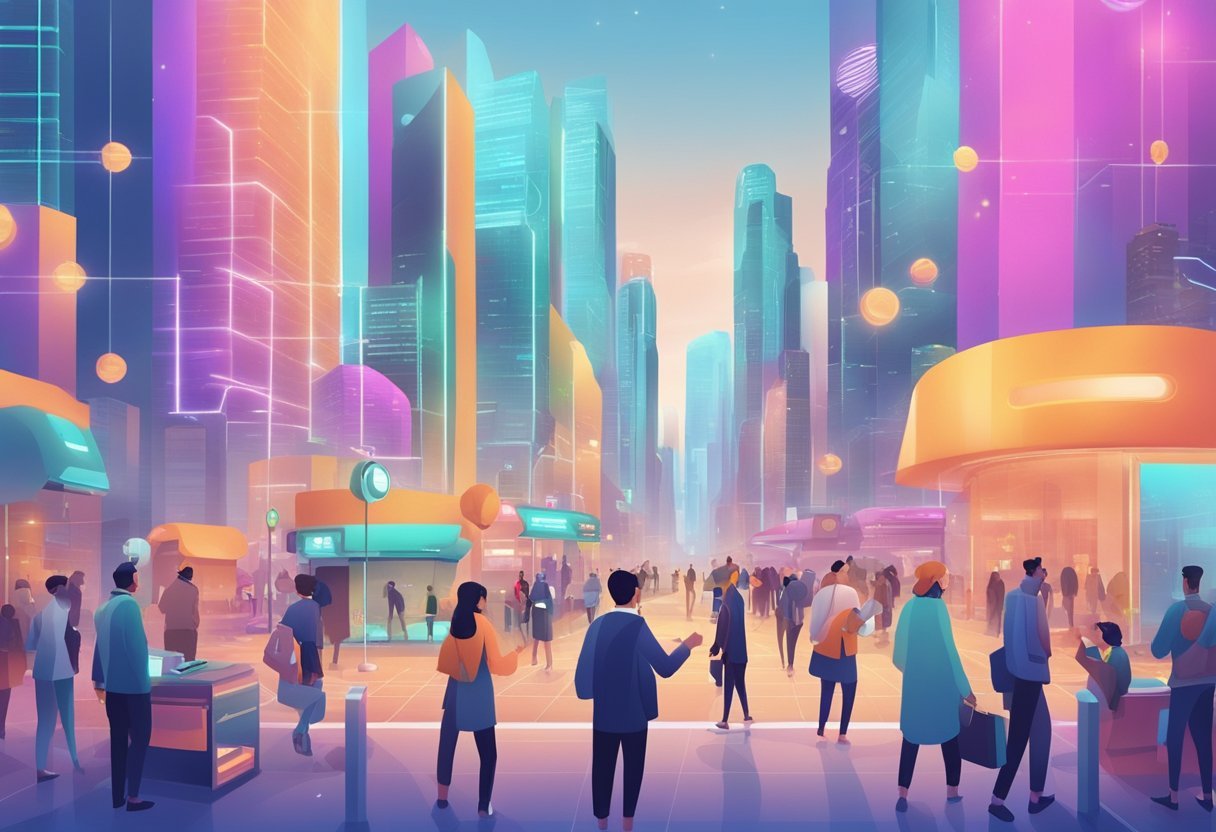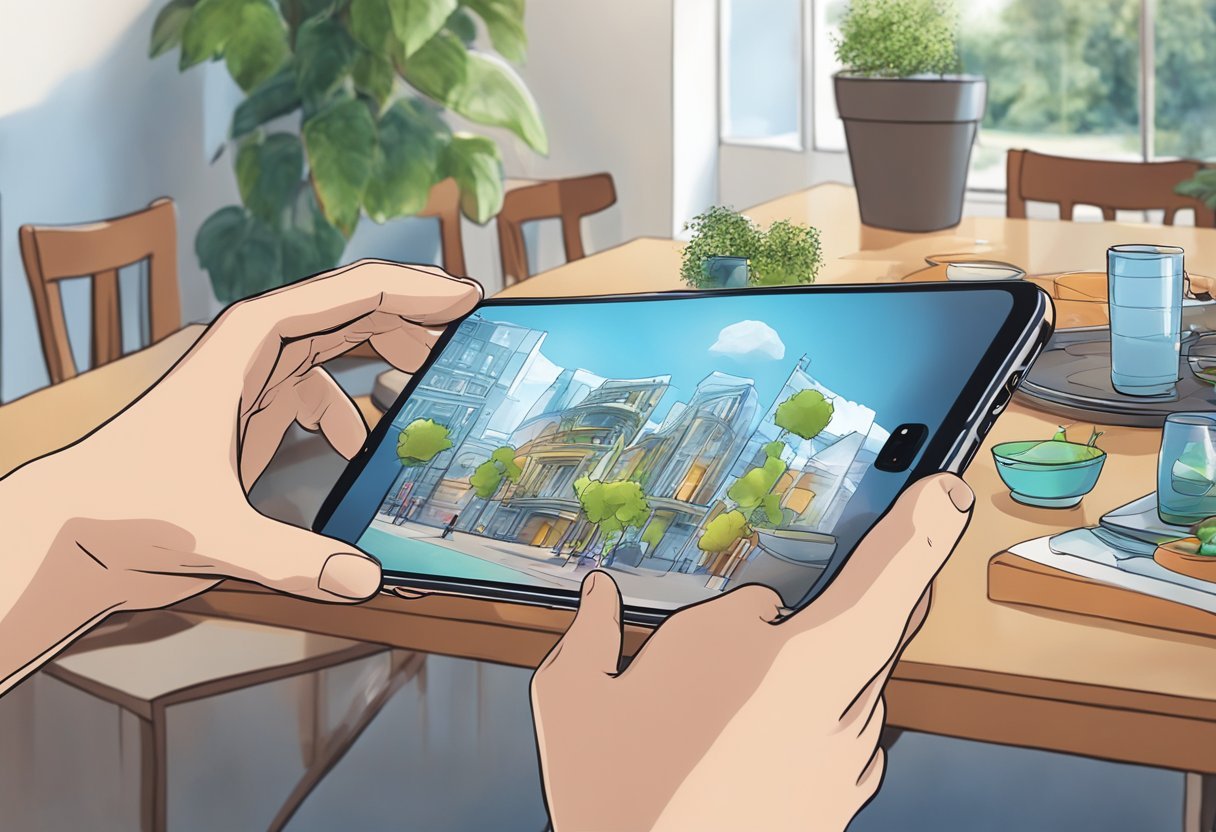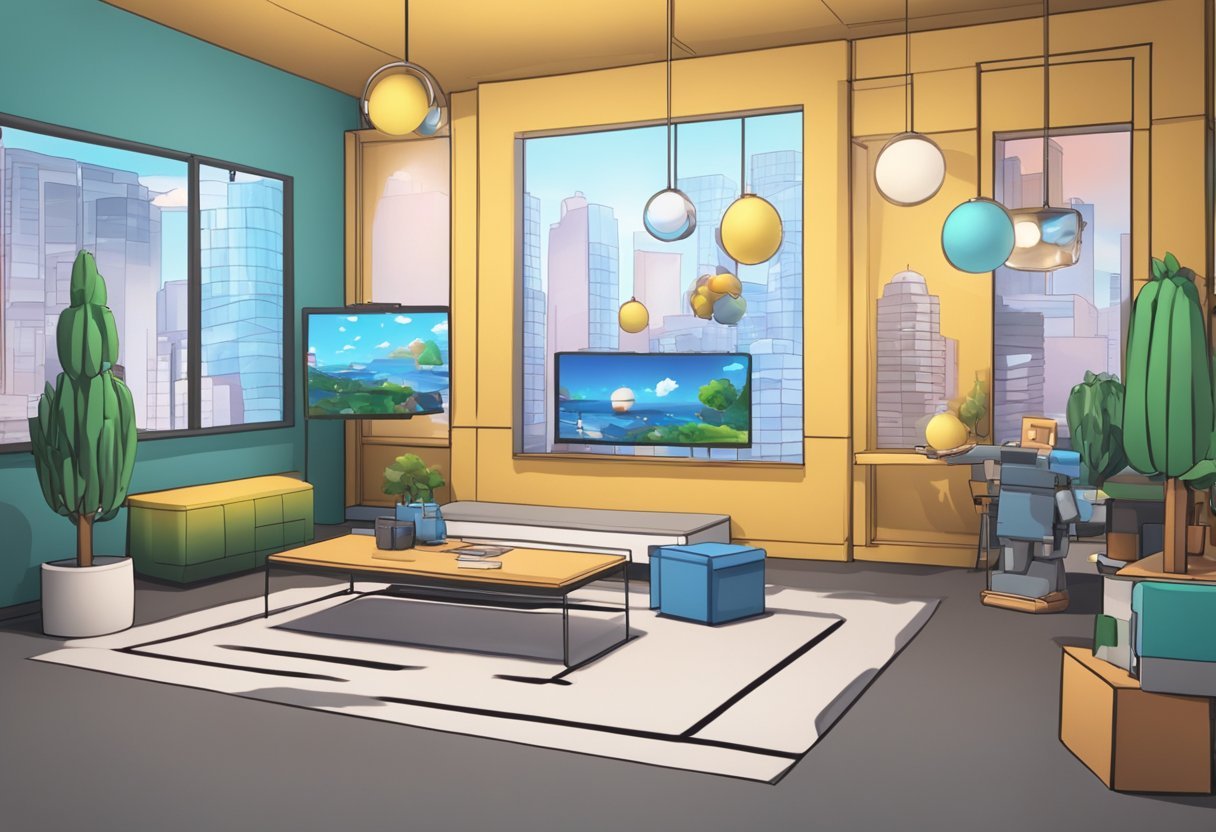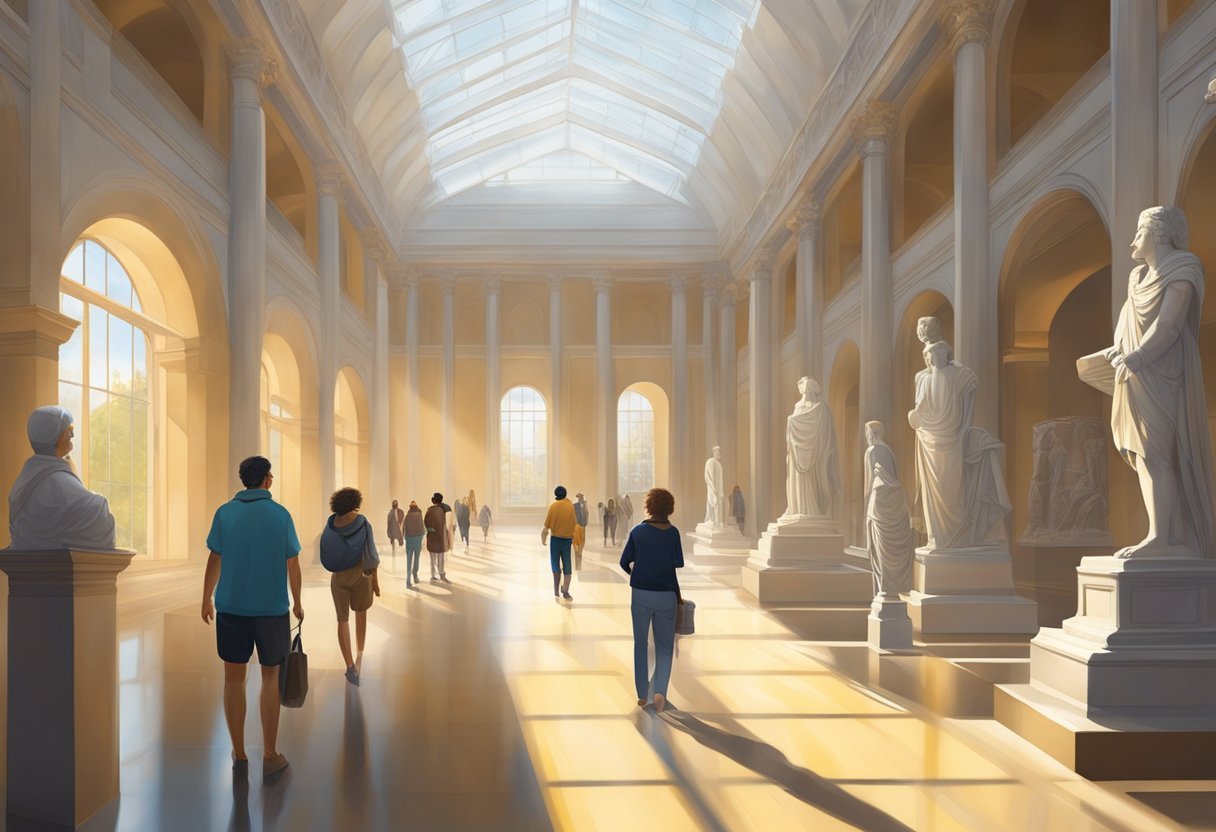Augmented Reality (AR) is a technology that has been gaining popularity in the retail industry. It is a way to enhance the shopping experience by providing consumers with a more interactive and personalized experience. AR in store can be used to create virtual try-ons, improve in-store interactions, and enhance product visualization. It is a way to blur the line between online and offline shopping, providing customers with the best of both worlds. In this article, I will share with you 15 practical examples of AR in retail stores and how Augmented Reality can improve customer experience
The evolution of AR in retail has been significant. As digitally native shoppers take over the marketplace, retailers are turning to emerging technologies like AR to enrich the relationships between consumers and brands. By and large, many still view AR as a novelty, but it has the potential to revolutionize the way people shop. AR technology has come a long way in recent years, and it is now more accessible and affordable than ever before.
AR in store is not just a tool for enhancing the shopping experience; it is also a powerful marketing tool. AR can be used to engage consumers and create a more immersive experience. It can be used to showcase products in a way that is more engaging and interactive than traditional advertising. AR can also provide retailers with valuable data and analytics, allowing them to better understand their customers and make more informed business decisions.
Key Takeaways
- AR in store can be used to create virtual try-ons, improve in-store interactions, and enhance product visualization.
- AR technology has come a long way in recent years, and it is now more accessible and affordable than ever before.
- AR in store is not just a tool for enhancing the shopping experience; it is also a powerful marketing tool.
Evolution of AR in Retail

Augmented reality (AR) is a technology that has been transforming the retail industry, providing customers with an immersive experience that blends the physical and digital worlds. AR technology has been used by retailers to enhance the shopping experience, increase customer engagement, and boost sales.
The Rise of Augmented Reality
Over the last five years, the use of AR by retailers has increased significantly. According to a report by Modern Retail, 38% of marketers were using AR in 2022, up 15 percentage points from 23% in 2017. Retailers are leveraging AR technology to create interactive experiences that allow customers to visualize products in their homes or try on virtual clothes. This technology has also been used to create virtual stores, which allow customers to shop from the comfort of their homes.
Impact of the Pandemic on AR Adoption
The COVID-19 pandemic has accelerated the adoption of AR technology in the retail industry. With customers unable to visit physical stores, retailers have been forced to find new ways to engage with their customers. AR technology has been used to create virtual try-on experiences, which allow customers to try on clothes and accessories virtually. This technology has also been used to create virtual stores, which allow customers to shop from the comfort of their homes.
The pandemic has also highlighted the importance of technology in the retail industry. Retailers that have invested in technology have been better equipped to handle the challenges posed by the pandemic. AR technology has been instrumental in helping retailers provide customers with an immersive and engaging shopping experience, even in the midst of a pandemic.
The use of AR technology in the retail industry has been on the rise over the last few years. Retailers are leveraging this technology to create immersive experiences that enhance the shopping experience and increase customer engagement. The COVID-19 pandemic has accelerated the adoption of AR technology in the retail industry, highlighting the importance of technology in the retail industry.
15 Practical Examples Of AR In Retail Stores
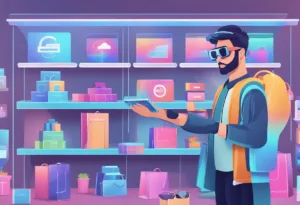
- IKEA Place
- Sephora Virtual Artist
- Warby Parker Virtual Try-On
- LEGO AR-Studio
- Gucci Try On
- Amazon AR View
- ASOS Virtual Catwalk
- Wayfair View in Room 3D
- L’Oréal Paris Virtual Makeover
- Home Depot Project Color
- Zara AR Experience
- Timberland Virtual Fitting
- Burberry AR Shopping
- Gap DressingRoom by Gap
- Nike SNKRS AR
IKEA Place
IKEA Place is an exemplary demonstration of AR in store, allowing customers to visualize how furniture and decor will look and fit in their homes before making a purchase. The app provides a true-to-scale 3D model of IKEA’s products, which can be projected into any room using a smartphone or tablet.
This AR feature helps to reduce uncertainty and increase customer confidence, as they can see the items in their intended environment, helping to ensure they make the right choice. IKEA Place has revolutionized the furniture shopping experience, making it more convenient, personalized, and efficient.
Sephora Virtual Artist
Sephora Virtual Artist is a cutting-edge example of AR in store, offering customers the chance to try on makeup virtually using their mobile device. This feature uses facial recognition technology to apply products to the user’s live image, allowing them to see how different shades and styles look on their own face.
Sephora’s AR tool also provides tutorials and recommendations, enhancing the shopping experience by making it interactive, informative, and fun. The Virtual Artist has significantly improved customer satisfaction by providing a mess-free and personalized way to test products.
Warby Parker Virtual Try-On
Warby Parker’s Virtual Try-On is a prime instance of AR in store that has transformed the eyewear industry. With this feature, customers can virtually try on different frames using the camera on their smartphone, providing a realistic representation of how the glasses will look on their face. This technology has made shopping for eyeglasses more accessible and convenient, as customers can narrow down their choices from the comfort of their home, ensuring they find the perfect pair that fits their style and preference.
LEGO AR-Studio
LEGO AR-Studio takes AR in store to a playful and interactive level by bringing LEGO sets to life. Through the app, customers can see animated 3D models of the sets, complete with sound effects and movements. This immersive experience not only entertains but also helps customers visualize the final product, making it a valuable tool for decision-making. LEGO’s AR-Studio encourages engagement and enhances the shopping experience, particularly appealing to the younger audience and LEGO enthusiasts.
Gucci Try On
Gucci Try On is an innovative use of AR in store within the luxury fashion sector. The high-end brand has developed an app that allows customers to try on shoes virtually. By pointing their smartphone camera at their feet, users can see how different styles look on them. This AR feature provides a unique and personalized shopping experience, making luxury items more accessible to a broader audience and helping Gucci maintain its status as a trendsetter in digital retail innovation.
Amazon AR View
Amazon AR View is a testament to the power of AR in store, enhancing the online shopping giant’s customer experience. Users can visualize products in their own space, from home decor to electronics, ensuring they fit and match the surroundings. This feature helps to bridge the gap between the convenience of online shopping and the confidence that comes with seeing a product in person. Amazon’s AR View has been crucial in reducing the hesitation associated with buying products online, providing a more satisfying shopping experience.
ASOS Virtual Catwalk
ASOS Virtual Catwalk showcases AR in store by bringing the fashion runway to the customer’s environment. Using their smartphone, users can see models walking and showcasing outfits in 3D wherever they are. This AR feature provides a dynamic and realistic view of the clothing, helping customers better understand the fit, movement, and overall look of the garments. ASOS’s innovative approach to AR has made them a leader in the online fashion retail space, offering a modern and engaging way to shop for clothing.
Wayfair View in Room 3D
Wayfair’s View in Room 3D is a compelling example of AR in store, allowing customers to place furniture and decor in their space virtually. This feature helps users make informed decisions by providing a realistic impression of how the products will look in their home. Wayfair’s AR tool has improved the home decor shopping process by providing a convenient and reliable way to plan and design spaces, enhancing customer satisfaction and reducing the likelihood of returns.
L’Oréal Paris Virtual Makeover
L’Oréal Paris Virtual Makeover is a standout AR in store experience, providing customers with the ability to try on makeup products using their mobile device. With this app, users can experiment with different colors and styles to find the perfect match for their skin tone and features. L’Oréal’s use of AR technology has revolutionized the beauty industry by offering a personalized and hygienic way to test products, leading to a more enjoyable and efficient shopping experience.
Home Depot Project Color
Home Depot Project Color exemplifies the practical application of AR in store for home improvement. The app allows customers to see how different paint colors will look on their walls before they commit to buying. This feature takes the guesswork out of choosing paint, providing a helpful tool for visualization and planning. Home Depot’s AR technology has enhanced the DIY experience, making it easier for customers to bring their home renovation ideas to life.
Zara AR Experience
Zara AR Experience brings AR in store to the fast-fashion world, offering customers an innovative way to view their collections. In select locations, shoppers can point their smartphones at store windows or sensor-equipped podiums to see models wearing Zara’s clothing come to life on their screens. This interactive shopping experience not only entertains but also provides customers with a new perspective on the products, making Zara a pioneer in integrating AR into retail environments.
Timberland Virtual Fitting
Timberland Virtual Fitting is an impressive use of AR in store, enabling customers to try on boots and shoes virtually. With this technology, shoppers can see how different styles look on their feet, helping them to make better purchasing decisions. Timberland’s AR fitting room has made the shopping experience more engaging and personalized, ensuring that customers are more likely to be satisfied with their purchases.
Burberry AR Shopping
Burberry AR Shopping offers an immersive AR in store experience, blending the brand’s traditional luxury with modern technology. Customers can use their smartphones to explore Burberry’s products in enhanced detail and even see the story behind certain items. This level of interaction provides a deeper connection to the brand and a more memorable shopping experience, positioning Burberry as a leader in the luxury retail space.
Gap DressingRoom by Gap
Gap DressingRoom by Gap represents AR in store by allowing customers to try on clothes virtually. Users select a virtual mannequin that matches their body type to see how different outfits will look, which helps in making more confident purchasing decisions. Gap’s AR experience addresses the challenges of online clothing shopping, such as sizing and fit, making it a valuable tool for consumers.
AR Technology and Platforms
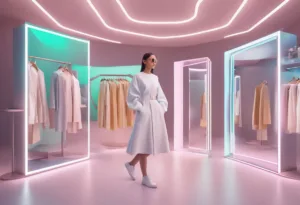
Key AR Technologies in Retail
AR technology has become a popular tool in the retail industry due to its ability to enhance customer engagement and provide a unique shopping experience. Some of the most commonly used AR technologies in retail include depth tracking, computer vision, and object recognition.
Depth tracking is a technology that allows AR software to detect the distance between the user’s camera and the object they are pointing it at. This technology is used to create a 3D model of the object, which can then be overlaid with digital content.
Computer vision is another key AR technology that is used to analyze the video stream from the user’s camera. This technology is used to recognize the object the user is pointing at and to identify its key features.
Object recognition is a technology that allows AR software to identify specific objects in the real world. This technology is used to provide customers with information about a product, such as its price, features, and availability.
Major AR Platforms and Apps
Several major AR platforms and apps have emerged in recent years, providing retailers with a range of options for implementing AR technology in their stores. Some of the most popular AR platforms and apps include:
- IKEA Place: This app allows customers to place virtual furniture in their homes to see how it would look before making a purchase.
- Snapchat: This app has a range of AR filters that can be used to try on virtual makeup, accessories, and clothing.
- Apple ARKit: This platform allows developers to create AR apps for iOS devices, such as iPhones and iPads.
- Google ARCore: This platform allows developers to create AR apps for Android devices.
AR technology and platforms have the potential to transform the retail industry by providing customers with a more immersive and engaging shopping experience. With the continued growth of AR technology, retailers are likely to continue to adopt these tools to stay competitive in the market.
Tips for Using AR in Store

Using AR in-store can be a significant advantage for retailers to enhance customer experience and boost sales. Here are seven tips for using AR in-store:
- Identify the right use case: Retailers should identify the right use case for AR in-store, such as product visualization, virtual try-ons, in-store displays, or brand campaigns. AR should be used to enhance the customer experience, not just for the sake of using the technology.
- Ensure the technology is accessible: Retailers should ensure that AR technology is accessible to all customers, regardless of their device or technical knowledge. AR should be user-friendly, easy to access, and easy to use.
- Provide clear instructions: Retailers should provide clear and concise instructions on how to use AR in-store. This can be done through signage, packaging, or staff training.
- Ensure the AR content is accurate: Retailers should ensure that the AR content is accurate and up-to-date. This can be done through regular maintenance and updates.
- Integrate AR with other technologies: Retailers should integrate AR with other technologies, such as mobile apps, social media, or e-commerce platforms. This can provide a seamless and consistent customer experience across all channels.
- Train staff on AR technology: Retailers should train their staff on AR technology and how to use it. This can help them to assist customers and answer any questions they may have.
- Measure the success of AR: Retailers should measure the success of AR in-store, such as customer engagement, sales, or return on investment. This can help them to evaluate the effectiveness of AR and make any necessary adjustments.
AR in Shopping Experience
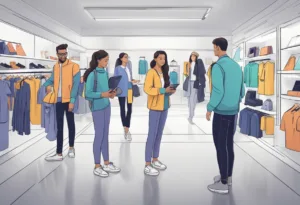
The use of Augmented Reality (AR) in shopping has revolutionized the way consumers experience shopping. AR technology has been used to enhance the shopping experience, making it more interactive, personalized, and convenient. AR technology has been used in various areas of shopping, such as product visualization, virtual try-ons, in-store shopping, displays, and brand campaigns.
Virtual Try-On and Fitting Rooms
One of the most significant areas where AR technology has been used in shopping is virtual try-on and fitting rooms. AR technology has enabled shoppers to try on clothes and see how they would look on them without physically trying them on. This technology has made shopping more convenient for consumers, as they can try on clothes from the comfort of their homes. Companies such as Nike and IKEA have implemented AR technology in their stores, allowing customers to scan items like shoes or clothing to view information, or they can enter a VR world to experience the products.
In-Store AR Navigation and Information
AR technology has also been used to improve in-store shopping experiences. Retailers have implemented AR technology to provide customers with information about products, prices, and promotions. IKEA has created a shoppable AR “escape room” game on Snapchat, allowing users to navigate through a virtual store and purchase products. Walmart has also implemented AR technology to provide customers with in-store navigation and product information.
AR technology has also been used to improve the shopping experience for furniture shoppers. IKEA has developed an AR-powered home design app, IKEA Studio, which allows customers to visualize furniture in their homes before purchasing. This technology has made furniture shopping more convenient for customers, as they can see how furniture would look in their homes before purchasing.
AR technology has revolutionized the way consumers experience shopping. AR technology has been used to enhance the shopping experience, making it more interactive, personalized, and convenient. AR technology has been used in various areas of shopping, such as product visualization, virtual try-ons, in-store shopping, displays, and brand campaigns.
Consumer Engagement and Marketing
Augmented Reality (AR) technology has revolutionized the way retailers engage with their customers. AR technology has been used to enhance brand awareness, create immersive experiences, and drive marketing campaigns. In this section, we will explore how AR has been used to enhance consumer engagement and marketing.
Enhancing Brand Awareness with AR
AR technology has enabled retailers to enhance brand awareness by creating immersive experiences that captivate customers‘ attention. For example, Starbucks has used AR technology to create an interactive in-store experience that allows customers to explore the origin of their coffee beans. This experience has not only increased brand awareness but has also improved customer engagement.
Nike has also used AR technology to enhance brand awareness by creating an AR-powered shoe customization experience. This experience allows customers to customize their shoes using AR technology, creating a personalized experience that increases brand loyalty.
AR-Driven Marketing Campaigns
AR technology has also been used to drive marketing campaigns. Beauty retailers have used AR technology to create virtual try-on experiences that allow customers to try on makeup and hair products virtually. This experience has not only increased customer engagement but has also improved the customer experience.
AR technology has also been used to create social media campaigns that increase brand awareness. For example, Coca-Cola has used AR technology to create a social media campaign that allows customers to interact with virtual characters using their smartphones. This campaign has not only increased brand awareness but has also improved customer engagement.
AR technology has transformed the way retailers engage with their customers. By enhancing brand awareness and driving marketing campaigns, AR technology has improved customer engagement and the overall customer experience.
Business Impact and Analytics
Improving Conversion Rates and ROI
The use of AR in retail stores has a significant impact on the conversion rates and ROI of businesses. According to a Nielsen Global Survey, 51% of consumers are more likely to purchase products from retailers who offer AR experiences. This indicates that the use of AR in stores can attract more customers and increase sales.
Moreover, AR can provide customers with a more immersive and personalized shopping experience. Customers can visualize products in real-time, which can help them make purchasing decisions and reduce the likelihood of returns. This can lead to increased customer loyalty and repeat purchases.
Retailers can also use analytics to measure the effectiveness of AR in improving conversion rates and ROI. By tracking customer interactions with AR, retailers can identify areas for improvement and optimize their AR experiences. They can also use analytics to determine the impact of AR on sales and adjust their strategies accordingly.
Measuring Customer Interaction with AR
Measuring customer interaction with AR is crucial for retailers to understand the effectiveness of their AR experiences. Retailers can track metrics such as the number of customers who interact with AR, the duration of their interactions, and the products they interact with.
These metrics can provide insights into customer preferences and behaviors, which can help retailers improve their AR experiences and tailor their offerings to meet customer needs. Retailers can also use these metrics to identify which products are most popular and adjust their inventory accordingly.
In addition, retailers can use analytics to measure the impact of AR on customer satisfaction and loyalty. By analyzing customer feedback and reviews, retailers can identify areas for improvement and make changes to their AR experiences to better meet customer expectations.
The use of AR in retail stores has a significant impact on the business, including improving conversion rates, increasing ROI, and enhancing customer satisfaction and loyalty. Retailers can use analytics to measure the effectiveness of their AR experiences and optimize their strategies to maximize their impact.
Frequently Asked Questions
How does augmented reality enhance the shopping experience in retail stores?
Augmented reality enhances the shopping experience in retail stores by allowing customers to visualize products in a more immersive and interactive way. By using AR, customers can see how products look in real-time, at scale, and in their intended environment. This technology also enables customers to customize and personalize products, increasing their engagement and satisfaction with the shopping experience.
What are the hardware requirements for implementing AR in a physical retail environment?
Implementing AR in a physical retail environment requires hardware such as smartphones, tablets, wearables, PCs, laptops, digital mirrors, and connected devices such as glasses, head-mounted displays, and lenses. The hardware requirements depend on the specific AR solution being implemented, but most AR applications can run on standard devices that customers already own.
Can AR in stores provide personalized recommendations to customers?
Yes, AR in stores can provide personalized recommendations to customers. By using AR technology, retailers can analyze customer data and provide personalized recommendations based on their preferences, purchase history, and behavior. This can improve the shopping experience for customers and increase sales for retailers.
What are the privacy implications of using AR technology in a retail setting?
Using AR technology in a retail setting can raise privacy concerns, especially when it comes to collecting and analyzing customer data. Retailers should be transparent about their data collection practices and provide customers with clear information about how their data is being used. They should also ensure that their AR solutions comply with relevant privacy laws and regulations.
How can retailers measure the ROI of deploying AR solutions in their stores?
Retailers can measure the ROI of deploying AR solutions in their stores by tracking metrics such as sales, customer engagement, and customer satisfaction. They can also conduct surveys and focus groups to gather feedback from customers and evaluate the effectiveness of their AR solutions.
What are the best practices for integrating AR with existing store layouts and design?
When integrating AR with existing store layouts and design, retailers should consider factors such as the size and layout of their stores, the types of products they sell, and the needs and preferences of their customers. They should also ensure that their AR solutions are user-friendly, easy to navigate, and provide a seamless shopping experience for customers. Retailers should work closely with their AR solution providers to ensure that their solutions are tailored to their specific needs and requirements.

